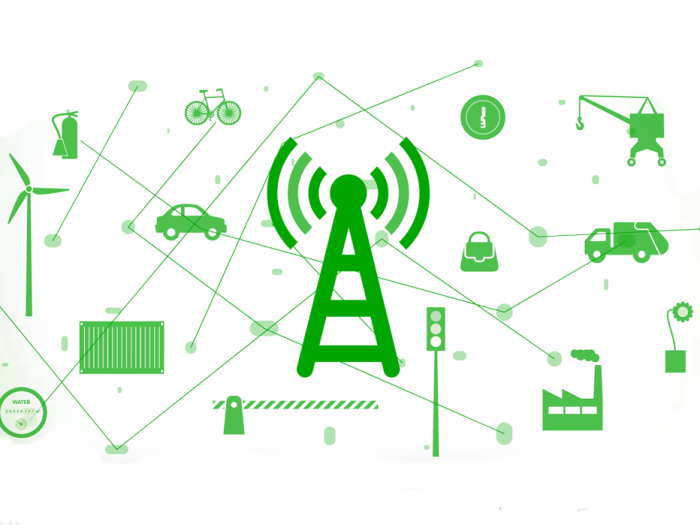
In June 2016, even earlier than expected, KPN finally claimed national (NL) coverage of their LoRa (Long Range, Low Power) network. A totally new network launched on the background of many people, while its effects could be huge.
LoRa is an energy-efficient solution that is able to connect Internet-of-Things (IoT) solutions to the internet. As they require the sensors to only incidentally exchange data such as on/off and full/empty, a device can send and receive information for two years using just to AA batteries. The costs of connecting a LoRa device to the network, are said to be relatively low. Millions of devices have already been connected to the network, but this will most likely increase a lot in the near future.
There are many possibilities for LoRa applications. An example that has already been implemented, is connecting street lights to the internet. As someone passes by the light, it will send a signal and the light will turn directly from 10% to 100%. Not only will it turn on, it will also be possible to control the lights remotely and have direct access to online information regarding these street lights. This information can be used to save amazing amounts of energy each year, using sensors that only cost between the €1,- and €5,-,. Especially interesting is the fact that KPN is not charging any recurring costs for using the network. This makes the network way more interesting than 3G for example.
Other LoRa applications are connecting beer tanks to the internet that send a signal to the supplier when it is (close to) empty, tracing freight transport, connecting railways, monitoring the location of rental bikes, and waste bins that send a signal when they should be emptied. Interesting right?
Although LoRa will probably cause a big impact on the environment such as more efficient use of energy resources and decreasing CO2 levels, it has not obtained a lot of attention yet. In my opinion, LoRa is a disruptive technology and deserves to get more national attention. The barriers of entry are not high, and LoRa could be interesting for companies of all sizes. Do you think LoRa gets the attention it deserves? And are we already getting most out of this technology?
https://www.nrc.nl/nieuws/2015/11/05/kpn-raakt-niets-meer-kwijt-1554132-a149336, https://www.kpn.com/zakelijk/grootzakelijk/oplossingen/infrastructuur-en-connectiviteit/internet-of-things-en/lora-en.htm, http://www.loxius.nl/133-internet-of-things-zal-in-elke-branche-een-rol-gaan-spelen.

